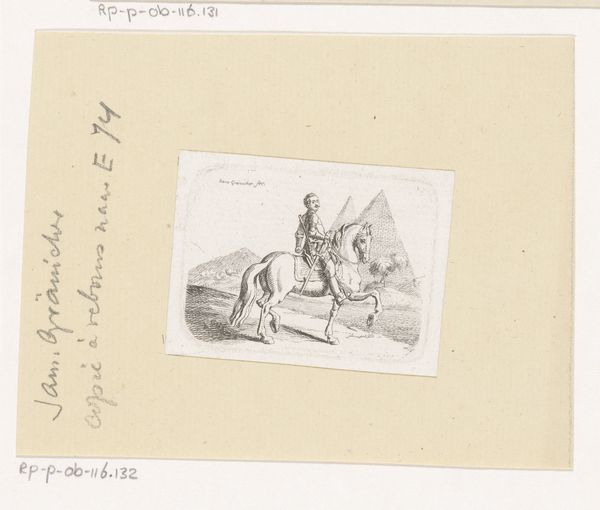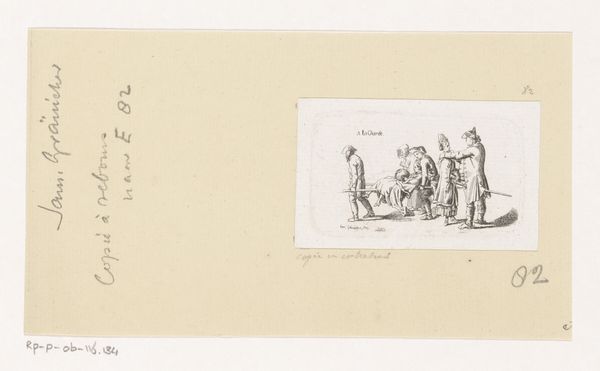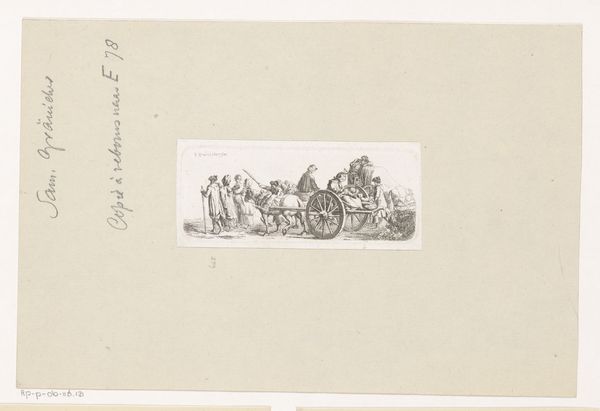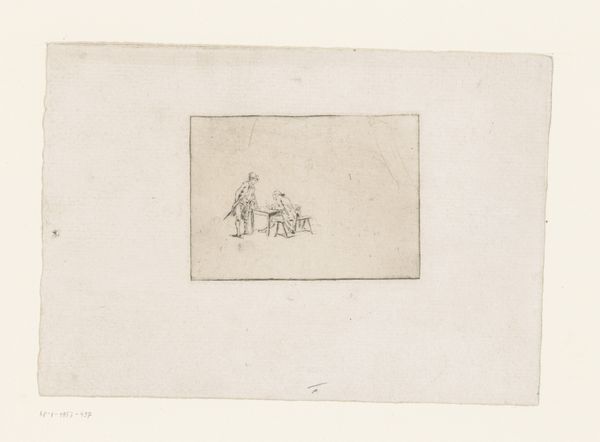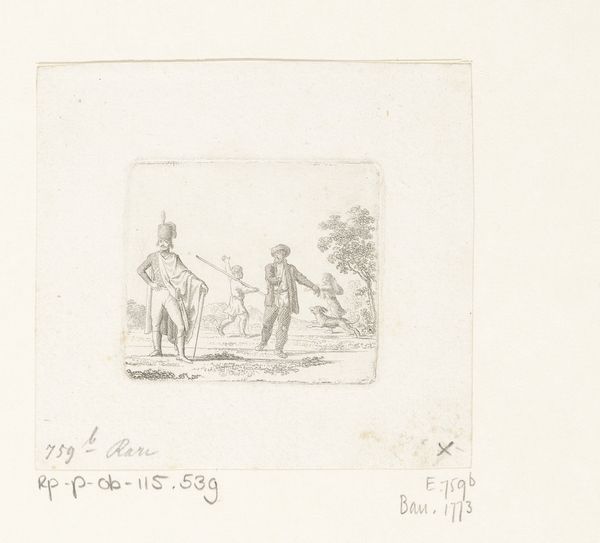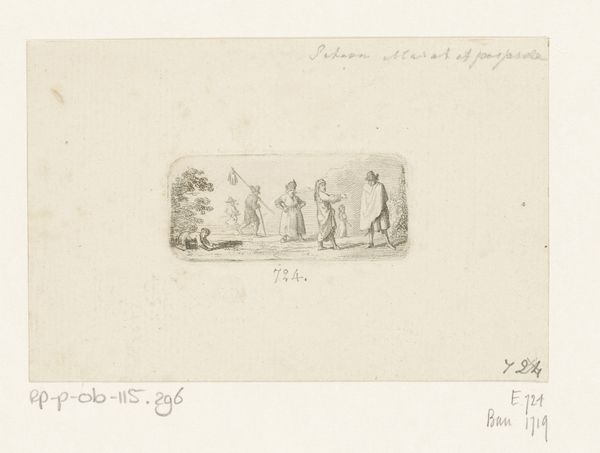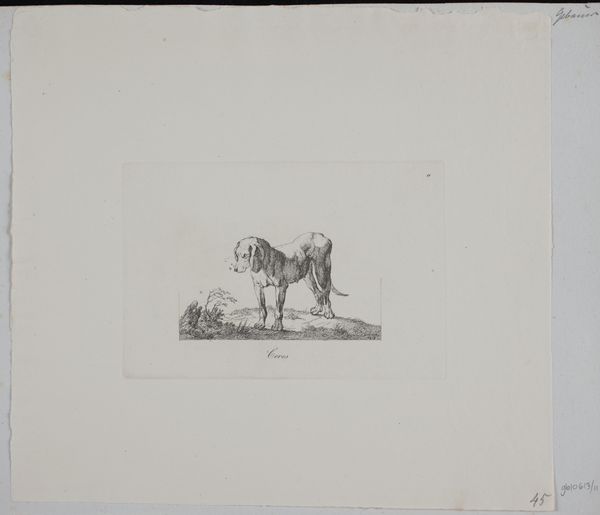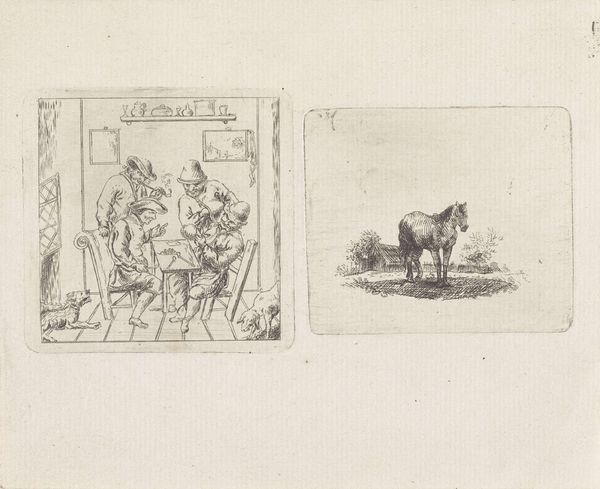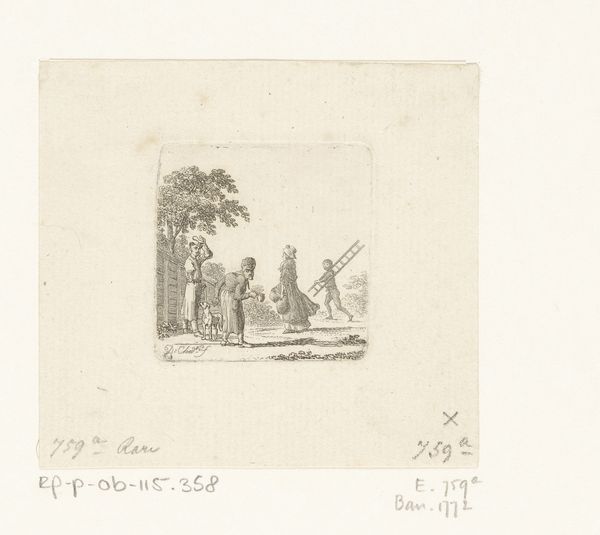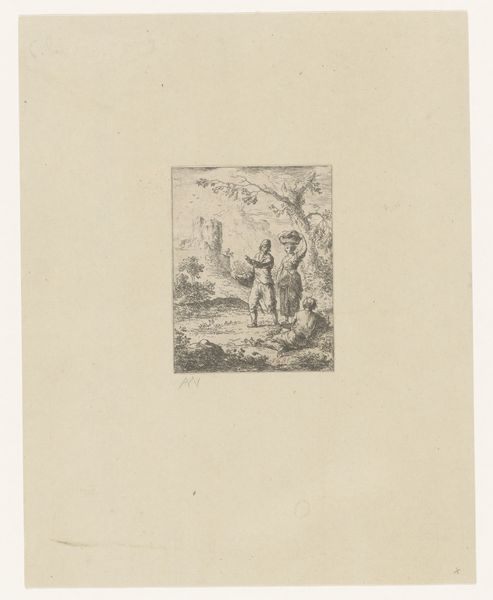
drawing, etching, paper, ink
#
portrait
#
drawing
#
etching
#
paper
#
ink
#
romanticism
#
genre-painting
#
history-painting
Dimensions: height 39 mm, width 52 mm
Copyright: Rijks Museum: Open Domain
Curator: Today, we're looking at "Twee Ruiters," or "Two Riders," an etching done with ink on paper. It's attributed to Samuel Gränicher, and it’s thought to have been made sometime between 1768 and 1813. Editor: Wow, it feels so... fragile. Look how delicate the lines are. There's something romantic, almost dreamlike, about the sketchy quality. I can almost hear the soft thud of hooves on damp earth. Curator: It is indeed delicate. The lines give a real sense of movement, despite the relatively small scale. There’s a theatrical element as well; the gesture of the standing figure is very performative. Given the timeframe, this imagery also speaks to an era defined by warfare and the rising importance of the cavalry. Editor: The pointing figure… He's quite commanding! A bit like a stage director giving notes. It reminds me a bit of theater design somehow—everything contained, slightly heightened, and performative, as you pointed out. The rider seems rather stiff and detached, though, like a performer awaiting instruction, rather than a fearless rider on a heroic mission. Curator: Interesting you say that. It does hint at a broader discourse. We can explore the historical contexts: consider how notions of power and authority were visualized during periods of conflict. Gränicher may be subtly critiquing those very concepts, presenting not heroic figures but subjects in a drama beyond their control. Editor: I think the contrast of posture creates an intentional, and perhaps unconscious, story. The pointer dictates the rider’s path in his heroic narrative, even if his destination is simply back into the quiet nothingness whence the two of them materialized from a bit of ink on paper. Curator: It's amazing how such simple marks can provoke these rich speculations, and what's left unsaid can invite us into considering the social frameworks of that era. Editor: Well, art is like catching clouds in a teacup sometimes—mostly nothing, until it’s something, which reflects both the author and, in turn, reflects us. It is quite something.
Comments
No comments
Be the first to comment and join the conversation on the ultimate creative platform.
